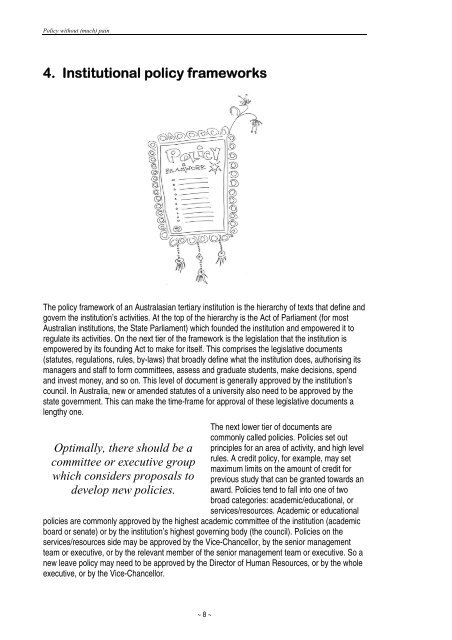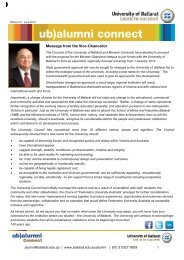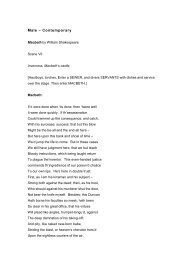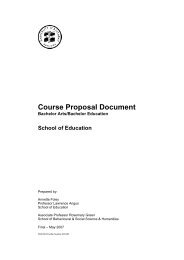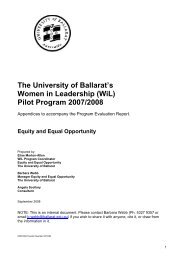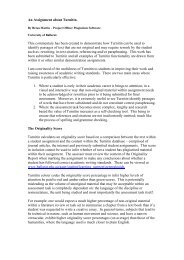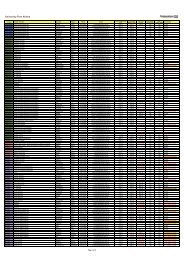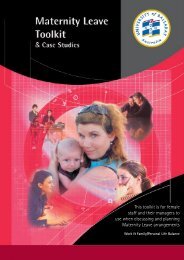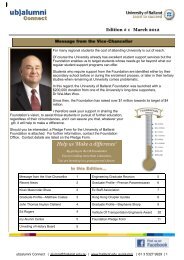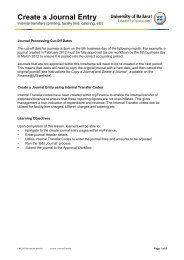Policy without (much) pain - University of Ballarat
Policy without (much) pain - University of Ballarat
Policy without (much) pain - University of Ballarat
- No tags were found...
Create successful ePaper yourself
Turn your PDF publications into a flip-book with our unique Google optimized e-Paper software.
<strong>Policy</strong> <strong>without</strong> (<strong>much</strong>) <strong>pain</strong>4. Institutional policy frameworksThe policy framework <strong>of</strong> an Australasian tertiary institution is the hierarchy <strong>of</strong> texts that define andgovern the institution’s activities. At the top <strong>of</strong> the hierarchy is the Act <strong>of</strong> Parliament (for mostAustralian institutions, the State Parliament) which founded the institution and empowered it toregulate its activities. On the next tier <strong>of</strong> the framework is the legislation that the institution isempowered by its founding Act to make for itself. This comprises the legislative documents(statutes, regulations, rules, by-laws) that broadly define what the institution does, authorising itsmanagers and staff to form committees, assess and graduate students, make decisions, spendand invest money, and so on. This level <strong>of</strong> document is generally approved by the institution’scouncil. In Australia, new or amended statutes <strong>of</strong> a university also need to be approved by thestate government. This can make the time-frame for approval <strong>of</strong> these legislative documents alengthy one.Optimally, there should be acommittee or executive groupwhich considers proposals todevelop new policies.The next lower tier <strong>of</strong> documents arecommonly called policies. Policies set outprinciples for an area <strong>of</strong> activity, and high levelrules. A credit policy, for example, may setmaximum limits on the amount <strong>of</strong> credit forprevious study that can be granted towards anaward. Policies tend to fall into one <strong>of</strong> twobroad categories: academic/educational, orservices/resources. Academic or educationalpolicies are commonly approved by the highest academic committee <strong>of</strong> the institution (academicboard or senate) or by the institution’s highest governing body (the council). Policies on theservices/resources side may be approved by the Vice-Chancellor, by the senior managementteam or executive, or by the relevant member <strong>of</strong> the senior management team or executive. So anew leave policy may need to be approved by the Director <strong>of</strong> Human Resources, or by the wholeexecutive, or by the Vice-Chancellor.~ 8 ~


